QuestionQUESTION: I am currently a beginner fish tank owner. I knew absolutely nothing when I started up and I think that that is my problem. I have two tanks running. A 10 and a 20 gallon. Both tanks have been up for a month now and I've been trying to do things right but I didn't start out right and now I am working to get things back on track. My 10 gallon has a Banjo Catfish and 6 Tiger Barbs and thats it. My 20 gallon has 1 male Dalmatian Molly, 2 male platys, 1 female platy, 1 male Balloon Molly, 3 Leopard Danios, 1 Plecostomus, 3 baby Dalmatian Molly babies (isolated) and 2 baby's that I don't know what they are. They could be either platys or mollies. The 10 gallon has all good levels. But the 20 gallon has had ammonia problems no matter what I do with it and the water is a little hard which I am remedying with aquarium salt. Is there something I can do about the ammonia problems in the 20 gallon?
ANSWER: Hi Lisa. In a freshwater tank you will want to only keep 1 inch of fish per gallon. Your 20 gallon tank has 14 fish in it and I am sure that some of them are larger than 1 inch. You also have to take into consideration that with gravel and any decorations that you may have in there you don't have a full 20 gallons in there. Your problem is you added too many fish too fast and you never let your tank properly cycle. Typically you should have started off with two or three small fish and let your tank cycle for about three weeks before adding any other fish. At that point you would have wanted to add only two or three fish a week. Now that we know why your tank is having problems we can get to how to fix it. First of all you should downsize the amount of fish you have in your tank. Ten would be the most I would put in a 20 gallon tank total. These fish that you have like hard water so you need not worry about fixing that problem. Ammonia is more toxic in water with added salt so you are just making conditions worse for them. Start doing frequent small partial water changes of about 3-5 gallons a day until you can get the ammonia under control. This means every day! You can even do several a day if you want. Do not tear down the tank and start over as this will just cause more of an ammonia spike. Rinse any filter pads you might have but do not replace them for the next few weeks and never replace your filter pads at the same time as you do a large partial water change. You have to give your good bacteria time to catch up with the overload that you put on your tank without letting the ammonia get to the point where it is toxic to your fish. If you are feeding more than once a day cut back and feed only what the fish will consume in 2-3 minutes. Keep up with your testing and include testing for nitrite and nitrate as well. This will give you a good indication of where you are as far as cycling your tank is going. On one more note, if you have used any products like ammo chips or something like that they will cause the ammonia reading to read where it was before you used them. These products neutralize ammonia but do not remove it so you can not get an accurate reading for ammonia after using these products. Keep up with your daily partials and try to find a new home for a few of your fish and you should start to see your ammonia dropping with in a week or two.
---------- FOLLOW-UP ----------
QUESTION: I did do a full 100% water change which is probably why my ammonia spiked like less than a week after I did it. I thought that would cure the ammonia but it didn't. I'm almost regretting even getting fish tanks because it costs too much and I'm on a limited budget. And the newborns is what brings the total to 14 fish. I don't even know if those 3 babies will survive and if they don't which I hope they do...since I want to see babies survive past just being born and then dying...I will probably get rid of my Danios and my platies. But I really want to start breeding mollies since they are so pretty. As far as feeding, I only feed a pinch or two once a day or every other day. The thing I really want though is to breed mollies and watch them have babies and stuff. I watched a molly give birth before and it was the coolest thing in the world. Unfortunately, all my female mollies die after giving birth. It really sucks because then I have to get more females. I can do water changes every day and I can drop the feedings too if thats what I have to do. But my main thing is to just have one fish give birth and have at least one or more of the babies survive.
ANSWER: Hi again. Please don't be discouraged about keeping fish tanks! You just went a little too fast in the beginning probably due to your excitement. This can all be fixed! First find new homes for a few of your fish as soon as possible. This will help in the build of ammonia and make it easier to get under control. Second breeding mollies is not that hard. You will have more luck if you keep your tank closer to a brackish tank as far as keeping the females alive and rearing the babies. They do best in water that is hard and alkaline with a pH of 7.6-8.0 roughly. Use about one tablespoon of marine salt per 5 gallons. They also like it on the warm side so keep your tank between 78-80 degrees F. Partial water changes done every week will also help keep the babies alive(don't forget to add your salt in the same ratio per gallon in your new water). Net breeders are good but it is better to make lots of small hiding spaces in your tank for the babies to hide in. Larger marbles in the bottom, a lot of small plants(real or fake) and some small caves and crevices should be good enough. The use of egg crate from your local home supply store makes a great place for the babies to hide. Simply place a small piece (maybe 6in.x6in.)on some larger marbles or smooth rocks and a larger rock on top of it to keep it from floating and the babies can go below the grate to hide. After the babies have reached a good size just simply remove the egg crate from your tank. Try not to use breeder nets because this stresses the mom out and will usually cause her to abort the pregnancy. You may not have all the babies survive but a few should make it to a size where it is no longer food for the parents. Keep only one male and two females in the tank as too many will cause stress for the babies and make sure they are fed a variety with vegetable matter in their diet. Don't clean any algae that may form on the back wall of your tank as this will provide the much needed greens in their diet.
Just get your ammonia under control first!
---------- FOLLOW-UP ----------
QUESTION: I do get discouraged because I paid good money for the fish, even if it was only a few dollars or so a piece and to get nothing from giving them away and stuff is even more discouraging. When my babies are born, I put them in a clear plastic breeder that floats within the 20 gallon. The mother is kept from the babies and then the babies fall through a small grate and are protected from the mother. So what fish do you think I should get rid of? And I would like to breed platys too. Mollies and platys are livebearers right?
AnswerHi there. If you are planning on breeding both mollies and platies you will need to set them up in different tanks. Mollies do best when kept in brackish(slightly saltwater) conditions and platies don't. Too many fish in your tank will also stress out the moms and stress may cause them to abort the pregnancy or die shortly after giving birth. Using a net breeder is fine however it is unnatural and can cause stress to the mom if you put her in there too late or too soon before birth. It is a much better idea to have lots of hiding spaces for the babies in your tank then to keep them captive in a smaller breeder container where even with all the holes in it, the water can tend to get a little stale. You can do it any way you would prefer. I am simply trying to offer you some advice. The money that you paid for the fish you should give away is a small price for you to pay in order to have them kept in a less crowded tank where the conditions will be better and the health of these fish will not be in jeopardy. Like I said to breed the mollies you will want to keep two females and one male in your 20 gallon tank and that is it( the pleco can stay as well depending on what kind of pleco it is. some can get to be 18-24 inches in length and should only be kept in a larger tank). If you had a larger tank you could get away with more but in a 20 gallon tank where you want to successfully breed your mollies and keep your water conditions right for their longterm health that is the limit.

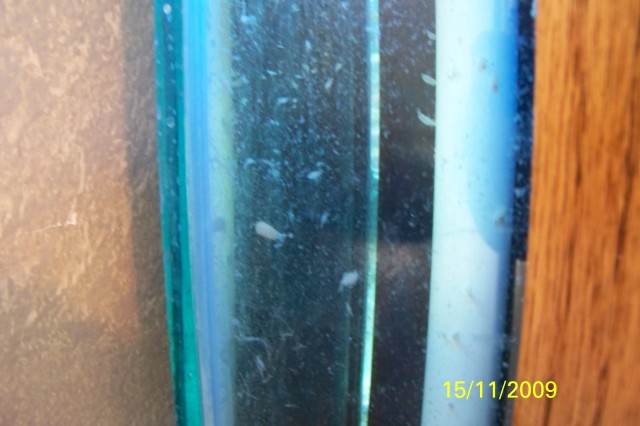 eggs in my tank?
QuestionQUESTION: I just discovered small white cone sh
eggs in my tank?
QuestionQUESTION: I just discovered small white cone sh
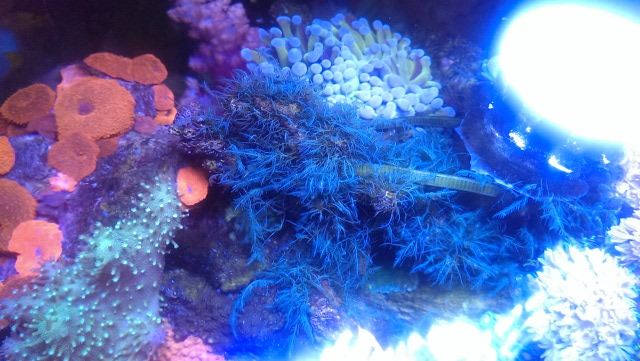 Algae/Plant
Question
Algae
Hi, I have this algae/plant growi
Algae/Plant
Question
Algae
Hi, I have this algae/plant growi
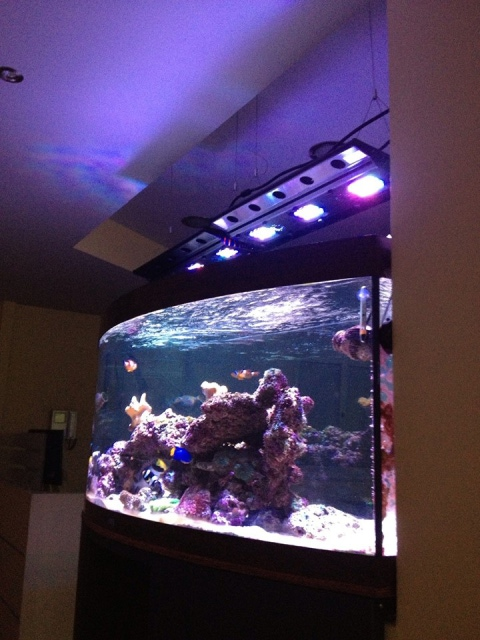 About to Buy Lights
QuestionListen, i set up a 38 gallon Aquarium, its basi
About to Buy Lights
QuestionListen, i set up a 38 gallon Aquarium, its basi
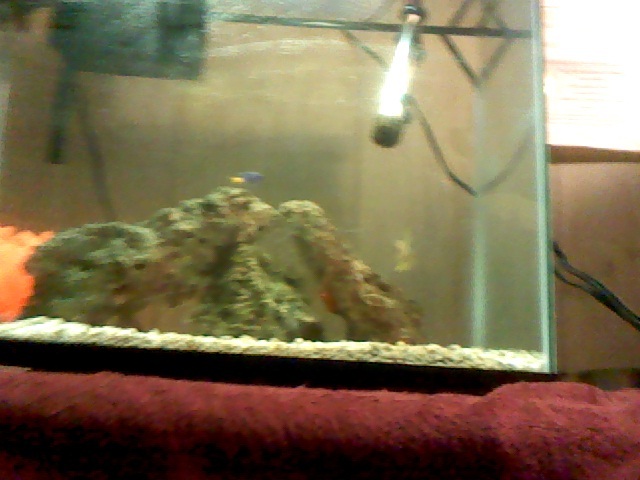 aqurium light
Question
my tank
hello, I have a 14 gallon aquarium tha
aqurium light
Question
my tank
hello, I have a 14 gallon aquarium tha
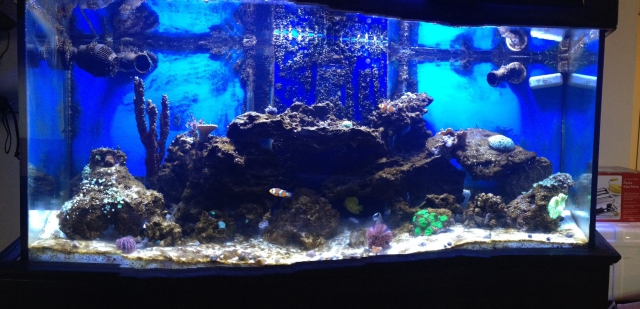 Algae problem
QuestionQUESTION: We have had our tank set up for about
Algae problem
QuestionQUESTION: We have had our tank set up for about